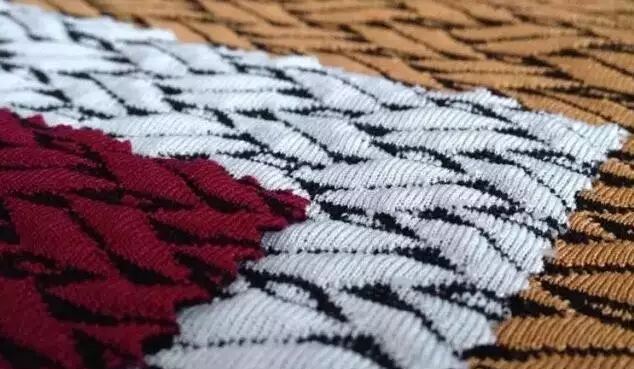Special printing of textiles
Printing is usually described as dyeing at certain areas of the striped pattern. Obtaining interesting patterns on fabrics can be achieved through several methods, including changes in yarn (fancy yarn), changes in weaving techniques (multi arm looms and jacquard looms), and color effects during weaving. Other colored patterns can be obtained by printing patterns on woven, knitted, or non-woven fabrics.
With the rapid development of high-tech skills, a large number of new materials and processes have emerged one after another, and the printing and dyeing skills meet the requirements of the ecological textile standard 100, which is in line with the current global textile consumption trend. The future prospects for use are very promising. Due to the successful use of new polymer materials abroad and the decrease in commercial costs, the new adhesive, combined with relevant pastes and additives, can be used for large-scale printing and dyeing even on silk fabrics in an appropriate manner. The finished product has a similar hand feel and bright color to dye printing or dyeing, truly achieving a super soft effect and expanding the scale of use.
Special Printing: Further development and improvement of skills, including foam 3D printing, gold and silver powder printing, pearl printing, glitter printing, imitation distressed printing, reflective coating printing, metal foil printing, coating overlay printing, night flower printing, diamond printing, color changing printing, etc.

Imitation of Rotten Flowers Printing: A technique developed abroad (Japan, Italy, Germany) that uses special coating printing paste to print on fabrics to create a semi transparent effect. The primary component of this printing paste is polyurethane, which can be used on Paris fabric, cotton wool yarn, nylon 66, and wool fabric. It can be used on both white and colored surfaces to increase the variety of fabric colors.
Metal foil printing: In recent years, it has become very popular in domestic and foreign shopping malls, often used to make women's tops or skirts, Arab women's headscarves, etc., with a sense of richness and luxury. Its process is not too complicated, only a crucial special adhesive needs to be imported, and the price is expensive. At present, the adhesive has been successfully trial produced, and the effect is similar to that of imports, with only 2/3 of the cost of imports.
Paint cover printing: also known as imitation discharge printing, refers to the method of directly printing with paint to achieve a discharge printing effect on dyed fabrics. Paint overlay printing can be divided into white overlay printing and color overlay printing. The former has more mature skills and is used more frequently, while the latter has products on the market, but often cannot solve problems such as the concealment of the ground color and the color development or feel when mixed with color coatings. Especially for the bright red phase, distortion often occurs, that is, the yellow light bright red phase turns into a pink red phase. The solution should be to use high-quality adhesives, combined with a base powder with minimal color distortion to make printing paste, which can print soft and strong imitation discharge printed fabrics on dark colored fabrics.
Sparkling printing: It is a novel printing method that prints patterns with a shimmering metallic luster on fabrics. It can produce a shimmering metallic luster effect on some velvet fabrics or lightweight fabrics, such as chiffon fabrics, and is a way to improve the added value of textiles.
The new development of paint dyeing skills, in addition to the active use of continuous dyeing (pad dyeing) and paint immersion dyeing (matching dyeing and garment dyeing) methods, has also developed some new processes suitable for fashion and market demand in recent years, namely the one-step fixing method of paint dyeing and printing (i.e. coating dyeing drying printing baking) and the one-step cleaning method of paint dyeing (i.e. the process of processing the dyed and dried fabric with resin, waterproof, water repellent, flame-retardant, coating, etc., and then baking), which can greatly shorten the process flow, save energy, and have great development prospects.
Article source: Fancy Thread Manufacturer
-
05-27
The reason why fabrics containing spandex are prone to yellowing
Spandex is a commonly used fiber variety in our daily lives, characterized by good elasticity, low fineness, high elastic modulus (cracking elongation can reach 400-800), and low specific gravity. Spa
-
04-24
Colored non dyed nylon with synthetic fiber raw material
The current conventional fiber coloring mostly uses yarn dyeing method, which has long process, high loss, high cost, and the product has color difference and low color wash fastness. Yarn is prone to
-
03-26
What are the characteristics of non dyed spandex?
Non dyed spandex has also been widely used in recent years. Non dyed spandex fiber can be blended with fibers such as nylon, polyester, acrylic, cotton, wool, etc., which can give fabrics excellent el
-
02-24
The influence of yarn structure on fabrics
The basic characteristics of yarn include its appearance and shape, twisting characteristics, fiber transfer and distribution characteristics in the yarn, as well as the surface fuzz and internal loos
